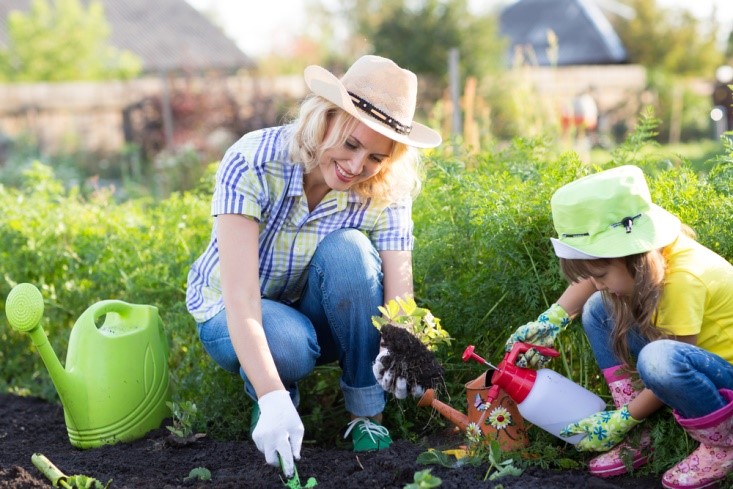Snow is beautiful at this time of year, but sometime after the holiday glow is gone and things are getting gray and slushy, you’re going to start dreaming of spring and getting outside to plant your garden. Lift your spirits on some cold, dark day in the coming months and start planning a garden you can plant and share with your kids.
It’s a given that children like playing in the dirt. This time, you can give a purpose to making mud – and get yourself a little help, too. You’ll also be giving your kids the gift of loving and understanding nature. To you it may be old hat, but to a child it’s astonishing that a blade of grass, a flower, or a whole carrot can spring from a tiny seed.
Leave the Lawn to the Professionals
When it comes to your lawn, though, you do want to be careful. Lawn care is both science and art, and takes knowledge to pull off properly. But whether you do the more complicated stuff yourself or use a professional lawn care service like ChemLawn lawn care, there are some things an older child can help with. Mowing the lawn, for example, is a time-honored assignment for a child old enough to handle the equipment. (Just make sure you supervise to see that the mower’s blades are sharp and at the right height for cutting your variety of grass.)
As for the younger kids, or those of any age whom you can lure away from the thrall of their video games, here are some great ways to introduce them to the joys of gardening:
Plant a Bowl of Salad
Even the pickiest eater will be enticed to eat salad if he or she has grown everything that’s in it. Early spring is the time to plant most fruits and vegetables outside, and they’ll fill the family’s salad bowl through the summer and early fall.
Tomatoes may be the most fun to grow because they take off quickly and produce for months. Rather than planting seeds, it’s better to buy young plants that have already gotten a good start. Depending upon where you live, they’re available in nurseries from late winter through spring. There are hundreds of varieties, from modern hybrids to heirloom types, but do include child-sized cherry tomatoes they can pick off the vine and eat in one bite.
Cucumbers come in either bush or vining varieties, and can easily be grown from seed. You only need a plant or two because they’re very prolific.
Zucchini and other summer squashes grow on vines and bloom from beautiful blossoms that are also edible. But beware of planting more than a few because you’ll soon be begging the neighbors to take some.
Lettuce, spinach, kale, and other leafy vegetables can be grown nearly year-round in some climates. You can start the seeds indoors for a head start in colder areas.
Strawberries are a crop that kids love. You can plant them directly in the ground or in containers especially made for growing them.
Grow Skyscraping Sunflowers
Some varieties of sunflowers are as short as a few feet, but some grow to over 15 feet tall to tower over a young gardener. Make sure you check the seed packets to get the kind you want. They’re easy to grow, and once they mature, there will be plenty of seeds to feed the birds and to toast for your own snacks, too.
Start a Fast-Growing Flower Garden
Kids like to see the results of their efforts, so flowers that start growing quickly are top of the list for youngsters. Here are some types that are speedier than others:
Marigolds. These sunny golden yellow flowers germinate in just a few days and blossom only 45 to 50 days after planting.
Zinnias. Some may germinate only three to five days after you plant them. It can take them 75 to 90 days to flower, but in the meantime, it’s encouraging to watch them grow more and more every day.
Nasturtiums. Not only are nasturtiums cheerful, but they attract hummingbirds and, if you grown them organically, they can also be used in salads or to top a special dessert. They have large seeds that are easy for small hands to plant, germinate in 10 to 14 days, and bloom within 35 to 52 days after that.
For more reading about kids and gardening, click here.
